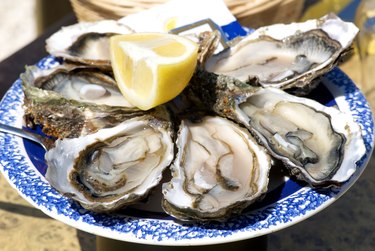
Getting enough protein and iron can help you maintain lean muscle mass, prevent anemia and symptoms of fatigue and support a healthy immune system. Healthy adults should get at least 0.8 gram of protein per kilogram of body weight per day, or about 60 grams per day for a 132-pound adult. Men should get 8 milligrams of iron per day, and women should get 18 milligrams of iron per day. You can meet your requirements by including a few high-protein, high-iron foods in your regular diet.
Beef Up Your Diet
Video of the Day
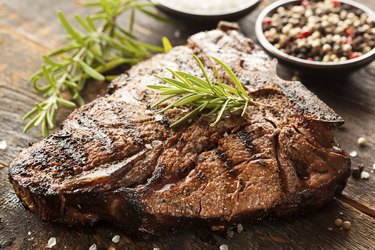
A 3-ounce serving of grilled beef tenderloin has 26 grams of protein and 2.8 milligrams of iron, and a 3-ounce serving of 95-percent-lean ground beef has 22 grams of protein and 2.4 milligrams of iron. Choose lean cuts of beef and extra-lean ground beef to limit your intake of unhealthy saturated fat. Try strips of grilled steak on a salad with spinach leaves, which provide additional iron, or make a high-protein, iron-rich chili with extra-lean ground beef, beans, tomatoes, chili powder, celery, onions and garlic.
Video of the Day
Shellfish Nutrition
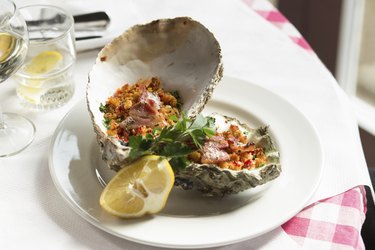
The University of Michigan lists shellfish as foods that are high in protein and iron. A 3-ounce serving of mussels has 10 grams of protein and 3.3 milligrams of iron, while a 3-ounce serving of oysters provides 18 grams of protein and 3.3 milligrams of iron. Bake shucked oysters topped with garlic, mustard, bread crumbs and Parmesan cheese, or make a seafood paella with mussels, lobster, shrimp, clam juice, olive oil, rice, saffron, garlic, onions and tomatoes.
Beans, Peas and Lentils
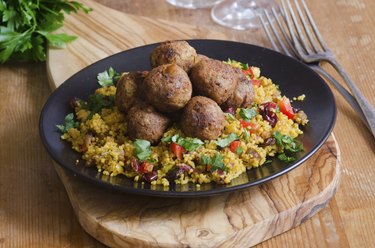
Legumes include lentils, split peas, chickpeas or garbanzo beans and kidney, pinto, black and white beans. Amino acids are the building blocks of proteins in foods and in your body. The protein in beans is incomplete, meaning they do not supply all of the amino acids that you need to get from the diet. But you can get a complete protein to meet your amino acid requirements by eating beans with grains or a source of animal protein. Meals with complete protein include whole-wheat pita with hummus and grilled red peppers; black beans with eggs, onions and tomatoes; and falafel served with whole-grain couscous and a tomato salad. You do not need need to eat each amino acid at each meal; you can meet your amino acid requirements by eating a variety of protein sources throughout the day.
Other Considerations
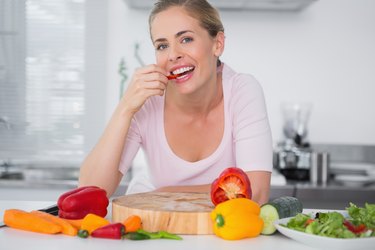
Meat and other animal products provide iron in its heme form, which is easier for your body to absorb. Plant-based foods, such as legumes and vegetables, provide nonheme iron, which is more difficult for your body to absorb than heme iron. You can increase absorption of nonheme iron by eating your beans with vitamin C-rich food, such as bell peppers, tomatoes and onion. You can further increase nonheme iron absorption by eating your beans with meat, fish or poultry, according to the Linus Pauling Institute.